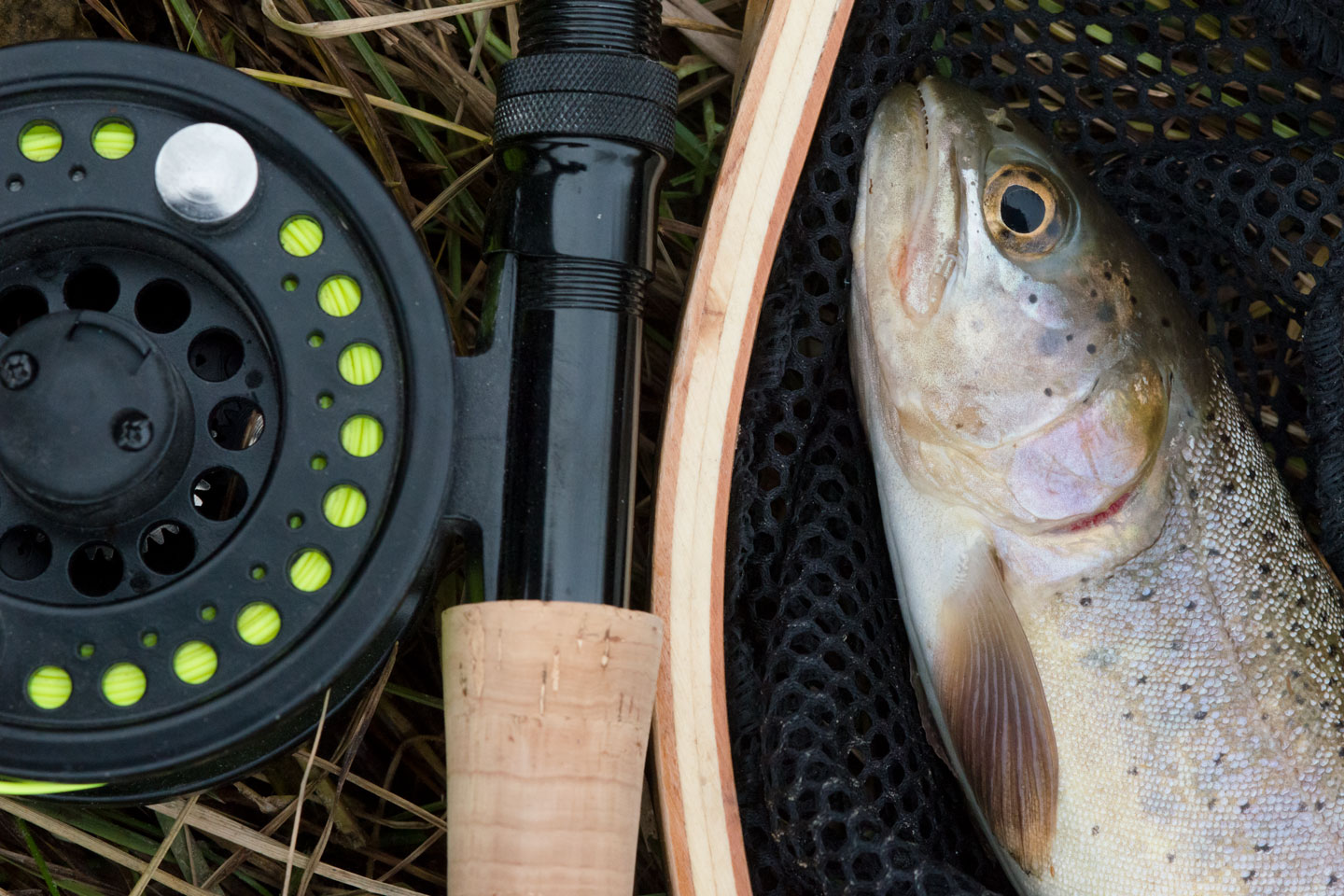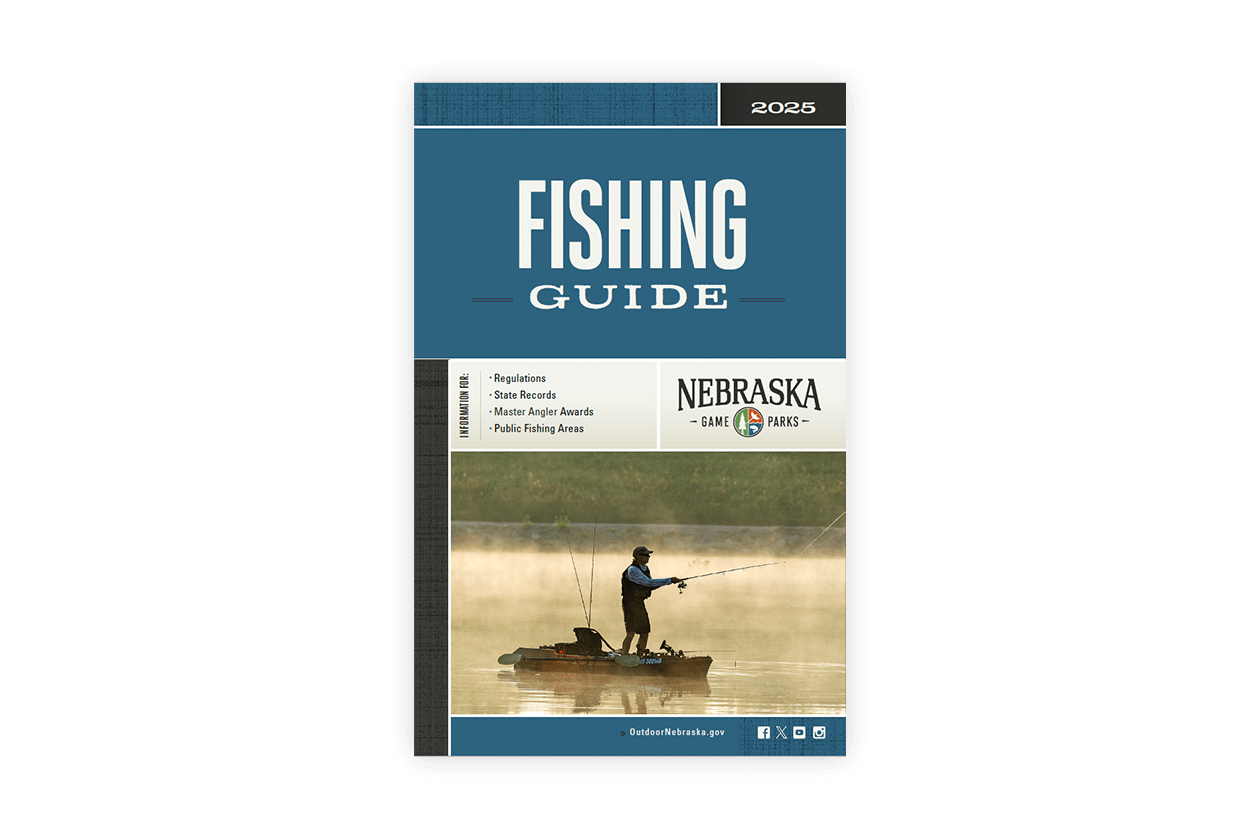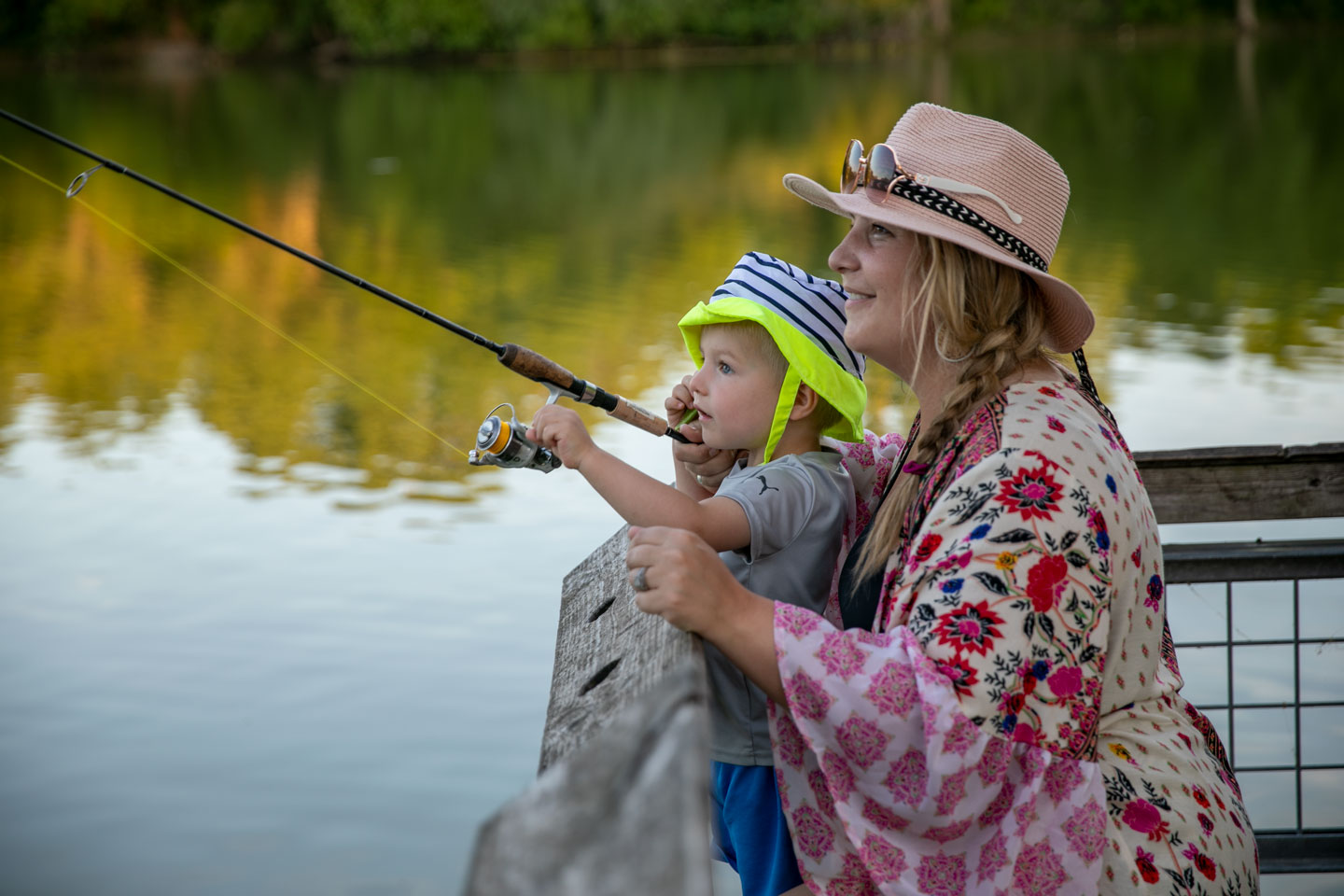Sunfish ID
Pomoxis nigromaculatus
Also known as: crappie, speckled crappie
Description: Silvery fish with irregularly arranged black speckles and blotches on sides and usually 7 or 8 spines in dorsal fin. Spawning males become almost entirely black. They are less tolerant of turbidity and siltation than white crappie. Aquatic insects and large zooplankton compose a larger portion of diet of black crappie than white crappie. They usually are heavier at any given length than white crappie. They can become overpopulated if predator populations are low. Crappies (black and white combined) are one of the top 5 commonly sought-after sport fish.
Family: Sunfish
Type: Sport Fish
Range: Statewide
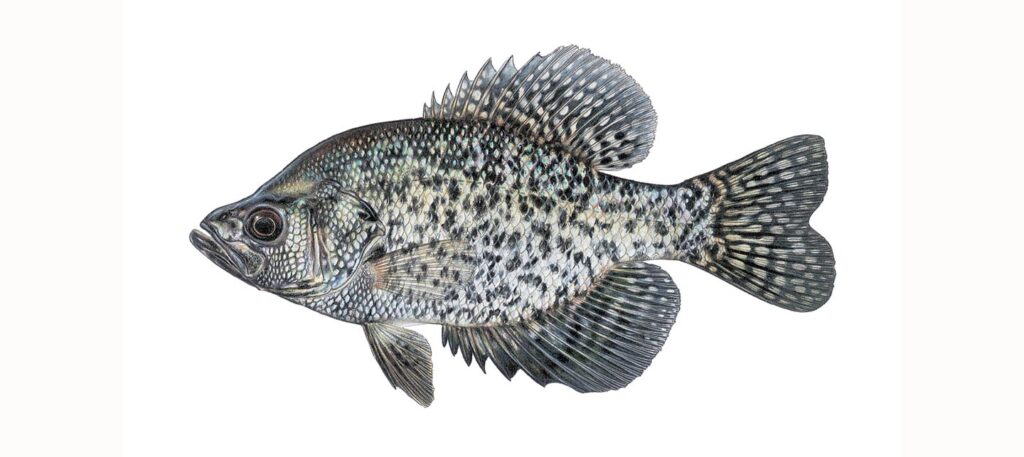
Lepomis macrochirus
Description: A flat, slab-sided fish with a rather small mouth. Pectoral fin is pointed and relatively long; gill cover tab dark colored to edge. Dark spot at rear base of dorsal fin. Insects are the predominate food item, often captured at the surface of the water, followed by small crustaceans, small fish, and snails; sometimes algae if animal food is scarce. When spawning, many nests (roundish depressions on bottom) are located close together in small, shallow-water areas (beds). Excellent prey fish for largemouth bass, particularly in farm ponds. Can hybridize with green sunfish.
Family: Sunfish
Type: Sport Fish
Range: Statewide
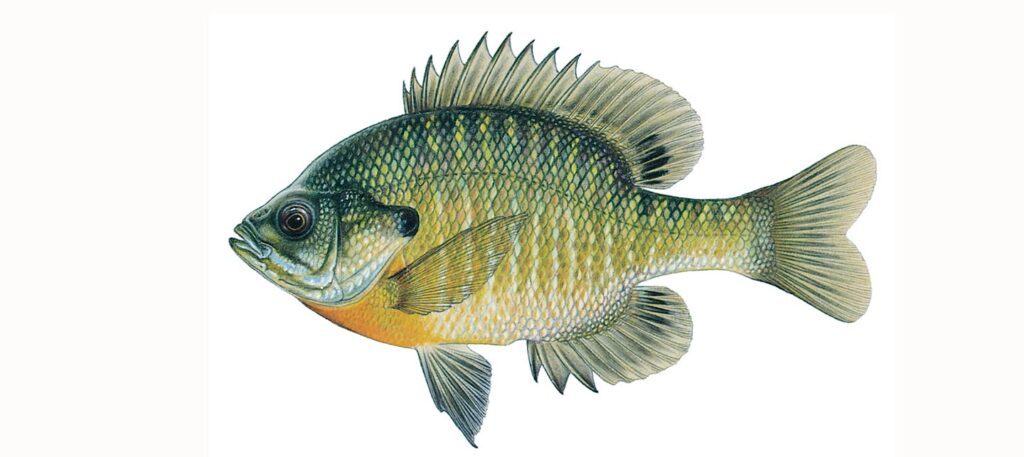
Lepomis macrochirus X Lepomis cyanellus Hybrid
Description: A hybrid that can occur in the wild. Has characteristics of both parents.
Family: Sunfish
Type: Sport Fish
Range: Statewide
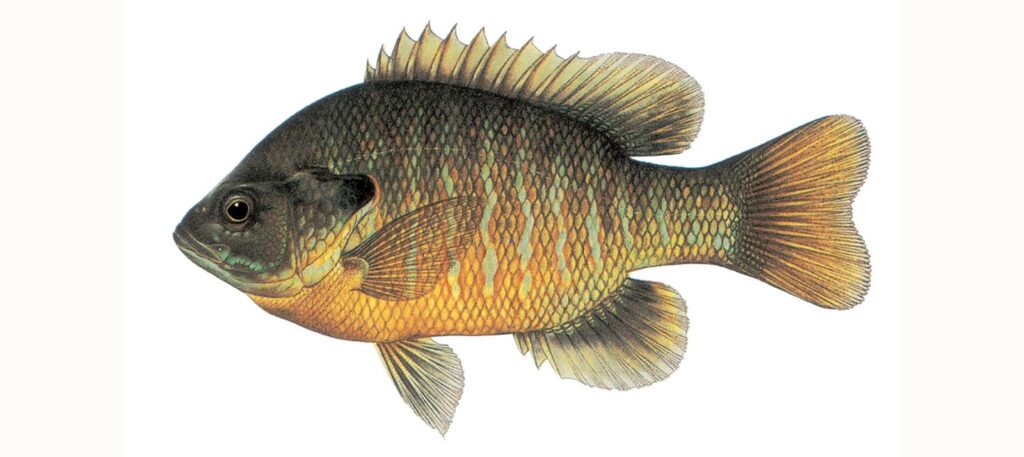
Lepomis cyanellus
Also known as: sunfish, sunnie
Description: Thick-bodied with a rather large mouth. Pectoral fin is short and rounded; gill cover tab dark with whitish or yellowish-orange margin. Back and sides bluish-green, head with blue streaks, and pale yellow or white belly. Fins often edged with yellow band. Thrives in either flowing or standing waters, including those that are unable to support other fish. Diet primarily consists of insects, small fish, and crayfish. Aggressive – easily caught by anglers. Usually not a colonial spawner and commonly hybridize with bluegill.
Family: Sunfish
Type: Sport Fish
Range: Statewide
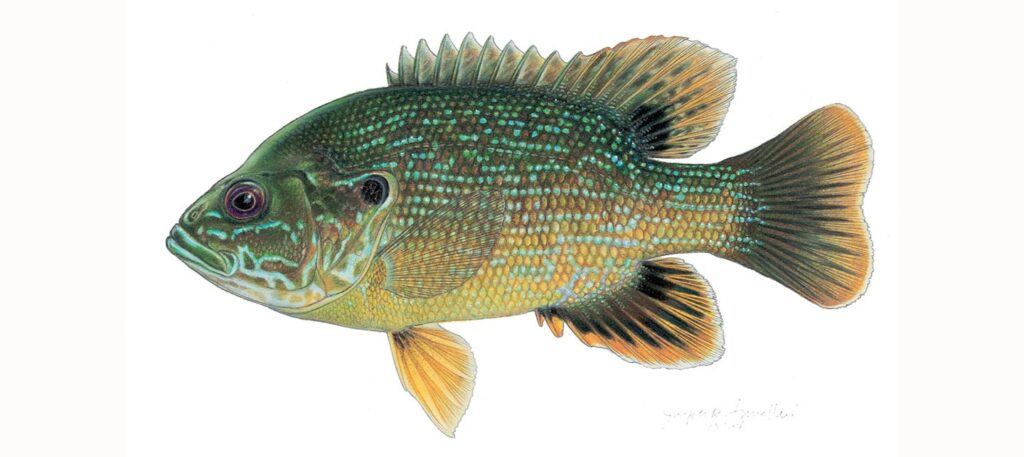
Micropterus salmoides
Also known as: bass
Description: Torpedo-shaped body with upper jaw extending beyond rear margin of eye and dorsal fin almost divided. Midside generally has a broad, continuous stripe with lower side either lacking dark spots or having dark spots that are irregularly arranged. It is an important predator, especially in small waters, and thrives in warm, moderately clear waters having little or no current. Young primarily feed on small crustaceans (mostly water fleas), insects, and small fish; whereas, adults primarily feed on fish, crayfish, and large insects, along with almost any other animal that swims or falls into the water. It is one of the top 5 commonly sought-after sport fish.
Family: Sunfish
Type: Sport Fish
Range: Statewide
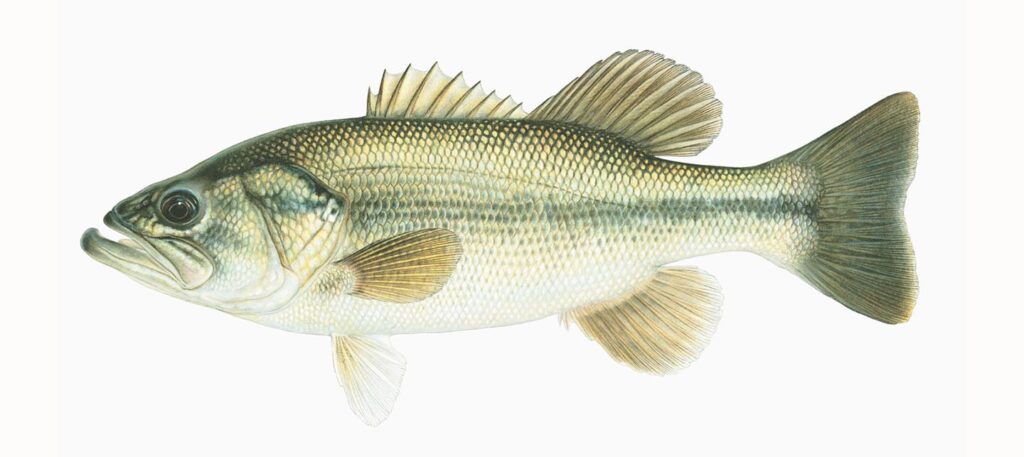
Lepomis humilis
Also known as: sunfish
Description: A rather flat, slab-sided fish with a relatively large mouth. Pectoral fin is rounded and moderately short. Gill cover tab black with whitish margin. Small, colorful sunfish, with numerous reddish-brown spots, red eyes, and reddish-orange sides and fins. Does well in pools and backwaters of streams with low or intermittent flow. Diet primarily consists of small crustaceans, larval aquatic insects, and an occasional small fish. Spawning habits similar to green sunfish. Seldom reaches size sought by anglers.
Family: Sunfish
Type: Sport Fish
Range: Statewide, uncommon in the Panhandle.
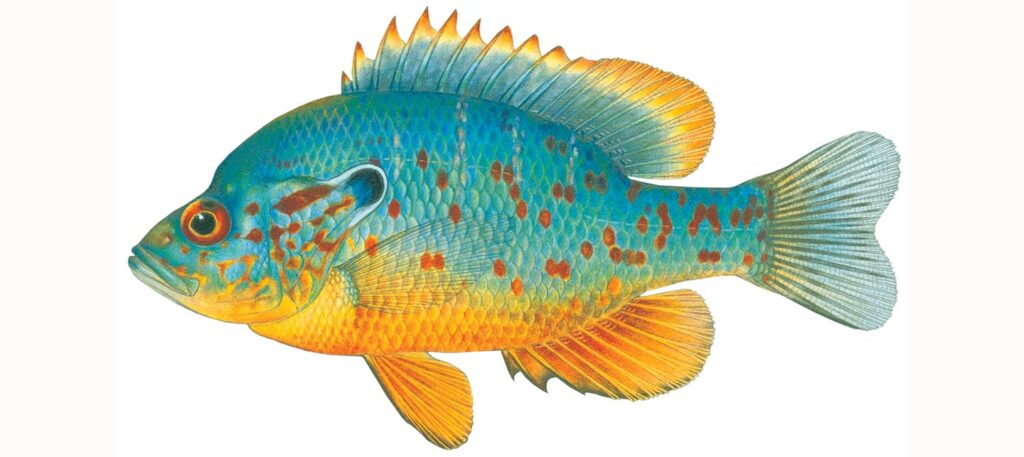
Lepomis gibbosus
Description: A flat, slab-sided fish with a rather small mouth. Pectoral fin is pointed and relatively long. Gill cover tab black with red and light colored margin; cheek with wavy blue lines. Dorsal fin has rows of spots. Diet primarily consists of snails and other small molluscs; it will also eat aquatic insects and small fish. Nesting is similar to bluegill.
Family: Sunfish
Type: Sport Fish
Range: Most often found in Sandhills lakes and Box Butte Reservoir.
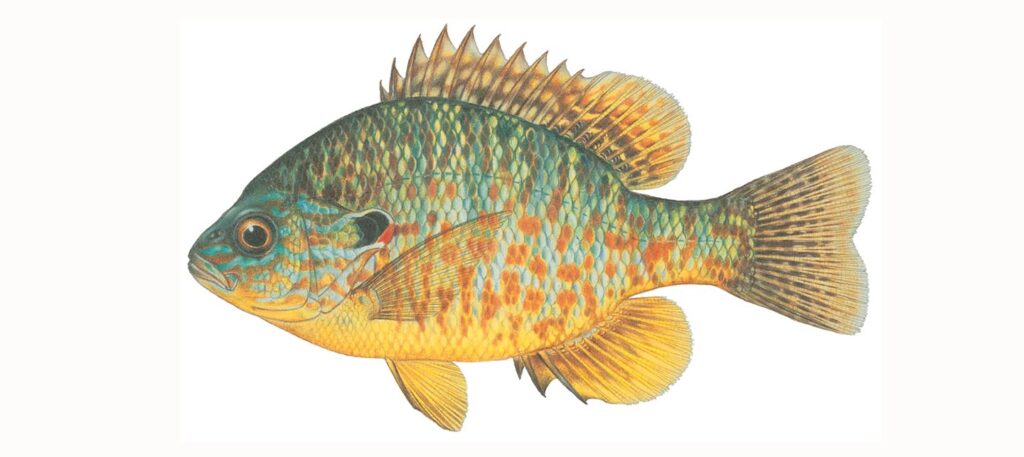
Lepomis microlophus
Also known as: redear, shellcracker
Description: A flat, slab-sided fish with a rather small mouth. Pectoral fin is pointed and relatively long; gill cover tab black with red margin. They are not a native fish and do best in ponds and small reservoirs having warm, clear water with an abundance of aquatic vegetation that harbors numerous small crustaceans and molluscs. Snails are the primary food source for redear, hence the common name (shellcracker). Redear can be used to control snails, which are required hosts in the life cycles of yellow and black grubs – both of which are common fish parasites. They also spawn in small colonies, similar to bluegill.
Family: Sunfish
Type: Sport Fish
Range: A few select waters throughout the state.
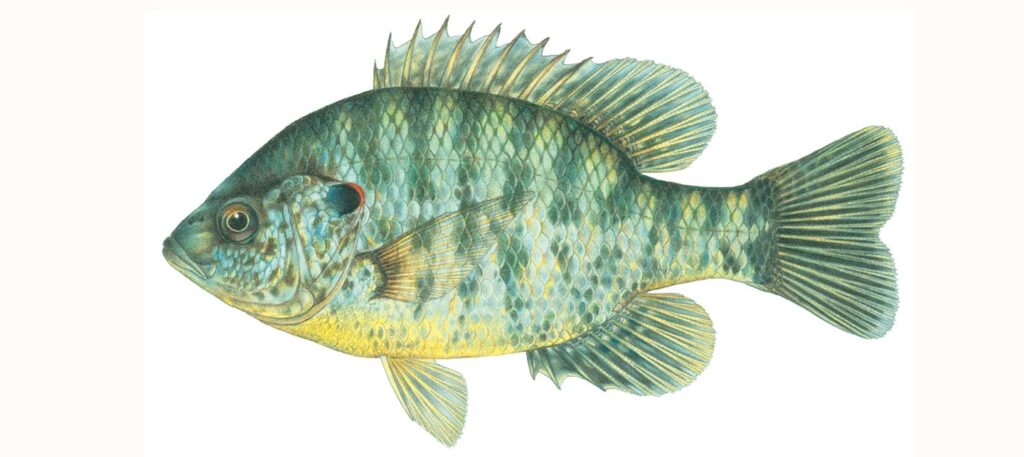
Ambloplites rupestris
Also known as: google eye
Description: Thick-bodied with a rather large mouth and short, rounded pectoral fins. Has red eyes and six spines in anal fin. Brassy color with dark spots forming horizontal lines on sides. Diet primarily consists of adult and immature aquatic insects, along with lots of small minnows and crayfish. Does best in clear water with abundant cover. It is a solitary nester.
Family: Sunfish
Type: Sport Fish
Range: Found in a few waters statewide, most common in sandpits along central Platte River.
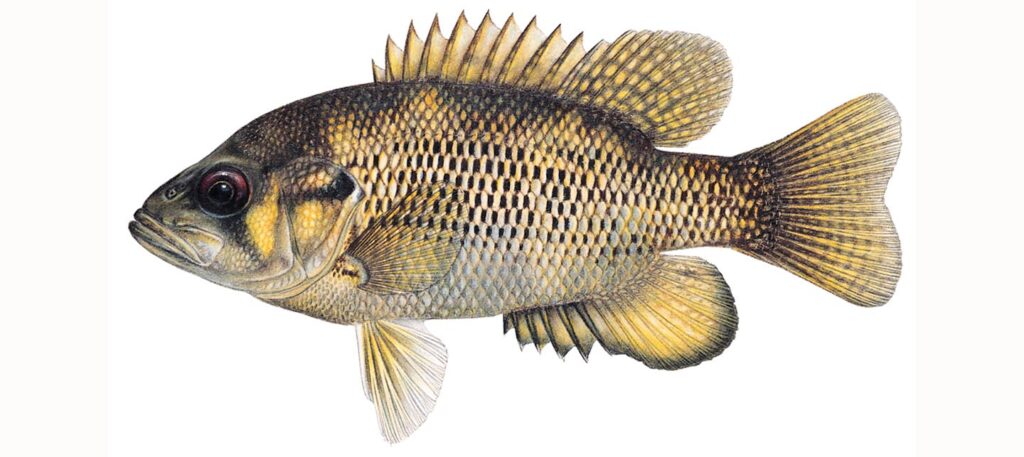
Micropterus dolomieu
Description: A torpedo-shaped fish with an upper jaw reaching about to rear margin of eye and dorsal fin is continuous with a shallow notch. Typically bronze-colored and sides plain or with several separate vertical bars with lower sides generally without dark spots. Has little tolerance for siltation and turbidity and thrives in streams with rock or gravel bottoms and riffles. Young primarily eat aquatic insects and their larvae along with small fish. Crayfish are an important food item for adults as well as fish.
Family: Sunfish
Type: Sport Fish
Range: Statewide, most common in upper Missouri River, Lake McConaughy, and Tri-County canal system.
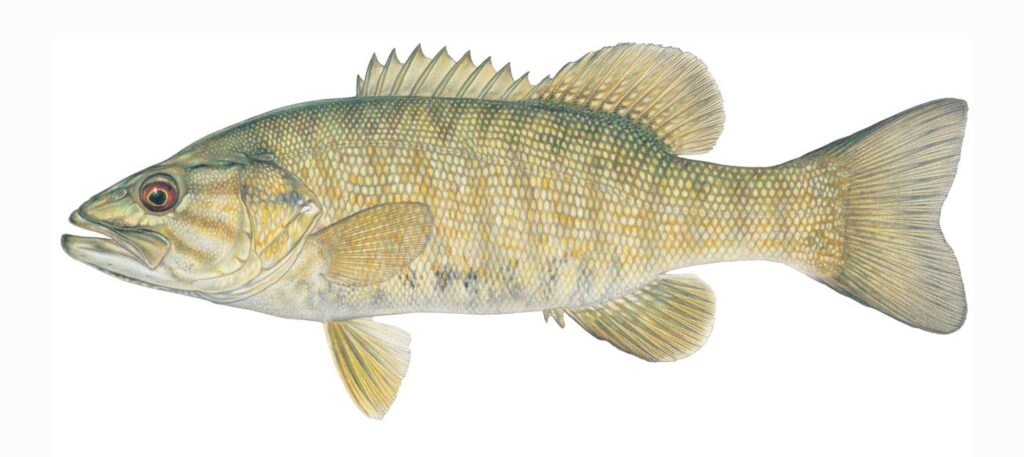
Micropterus punctulatus
Also known as: Kentucky spotted bass
Description: Torpedo-shaped body with upper jaw reaching to or slightly beyond rear margin of eye and dorsal fin having a slight notch. Midside generally having a broad, continuous stripe with margins broken and uneven. Lower sides with dark spots arranged in rows, forming a series of prominent horizontal streaks. Native habitat is permanent-flowing streams that are warmer and slightly more turbid than those utilized by smallmouth bass. Insects, crustaceans (primarily crayfish), and fish are the principal food items.
Family: Sunfish
Type: Sport Fish
Range: Introduced into Elwood Reservoir, several small streams in extreme southeast Nebraska, and some sandpits.
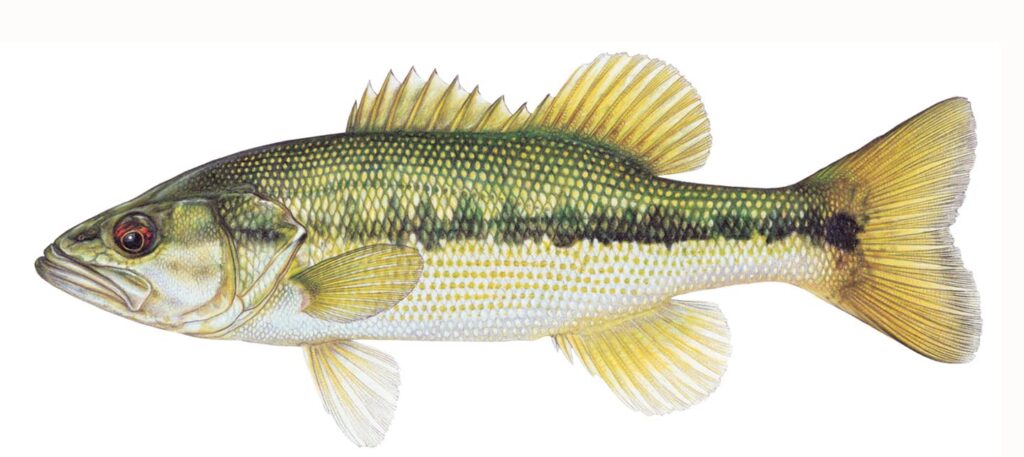
Pomoxis annularis
Also known as: crappie, silver crappie
Description: Silvery fish with faint black vertical bars on sides and usually 5 or 6 spines in dorsal fin. Spawning males become considerably darker, and some anglers confuse them with black crappie. Primarily feeds on small fish, but will also eat aquatic insects and large zoopankton. Can become overpopulated if predator populations are low. Crappies (white and black combined) are one of the top 5 commonly sought-after sport fish.
Family: Sunfish
Type: Sport Fish
Range: Statewide
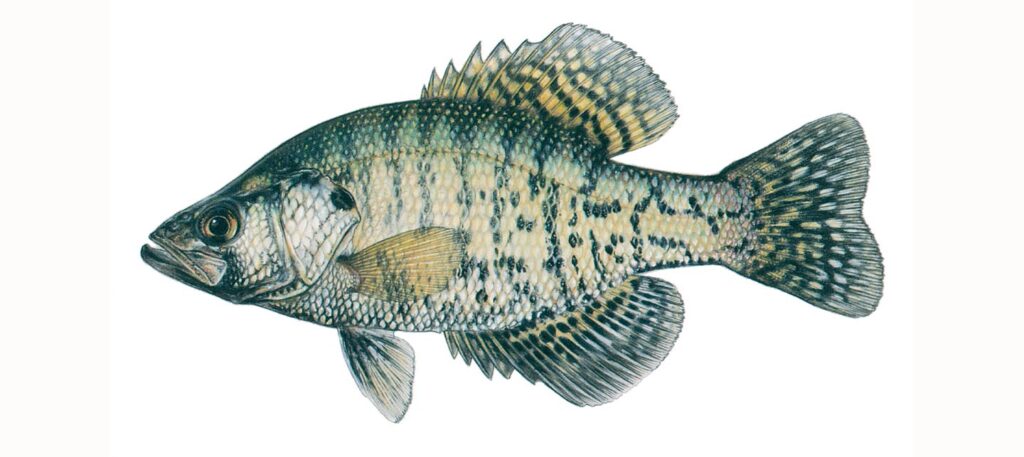
References
The Fishes of Nebraska by Hrabik, et. al (2015)
The Fish Book from NEBRASKAland Magazine (1987)Related Content
Discover other fish species and resources to angling in Nebraska.

